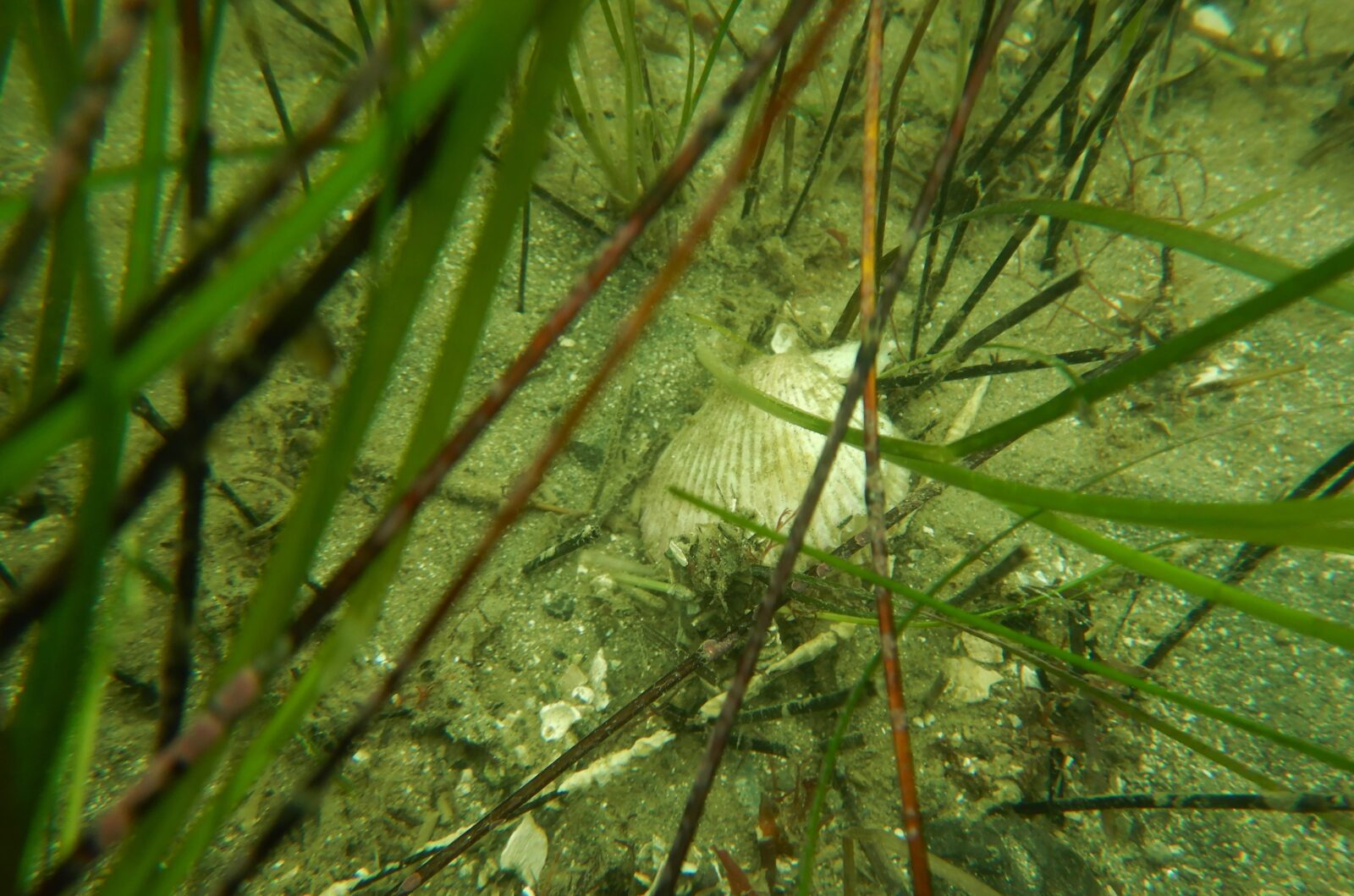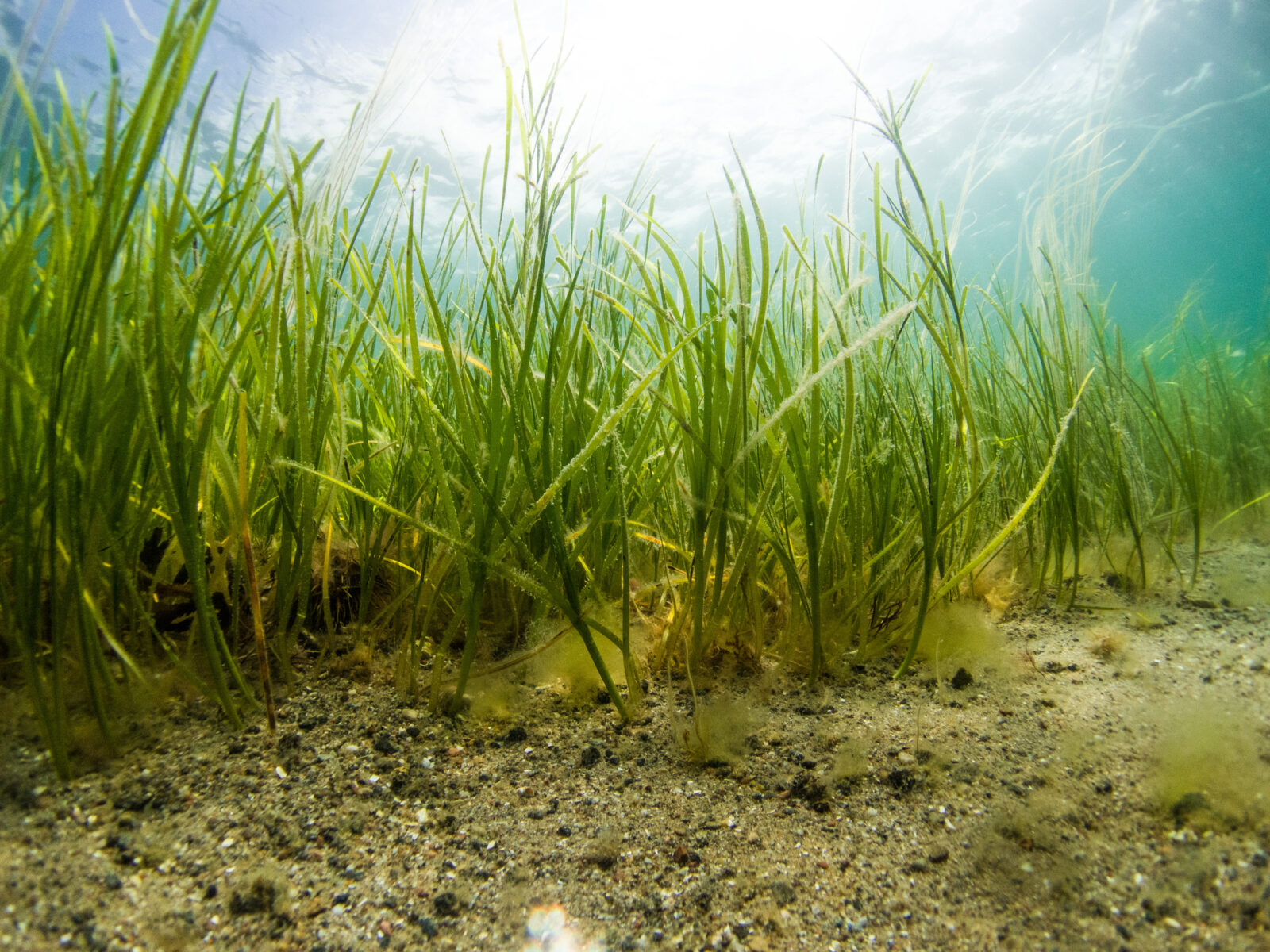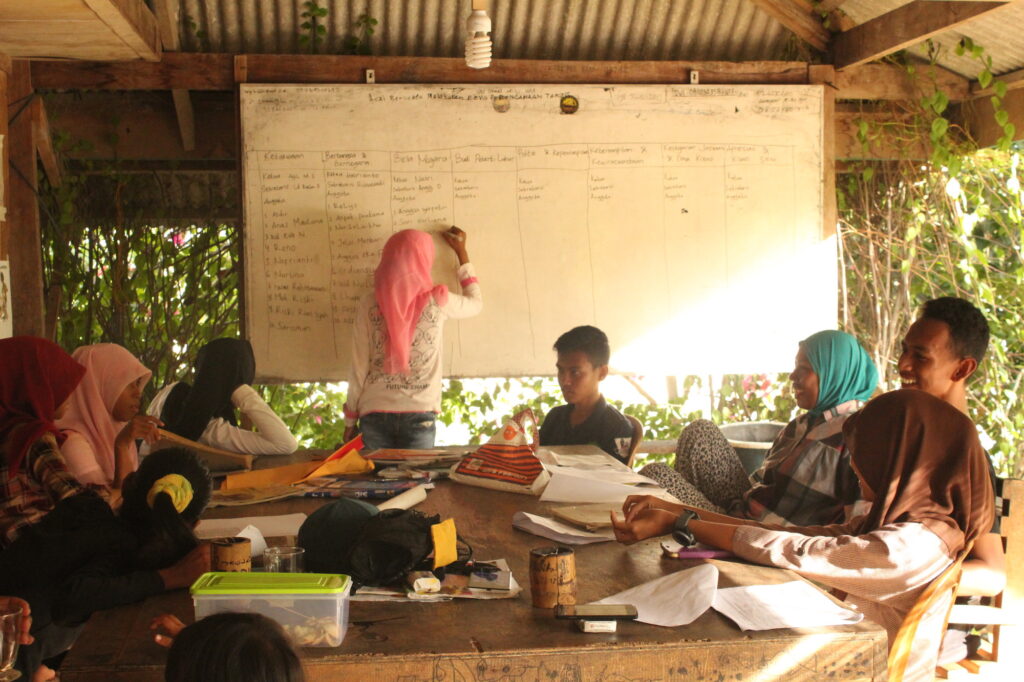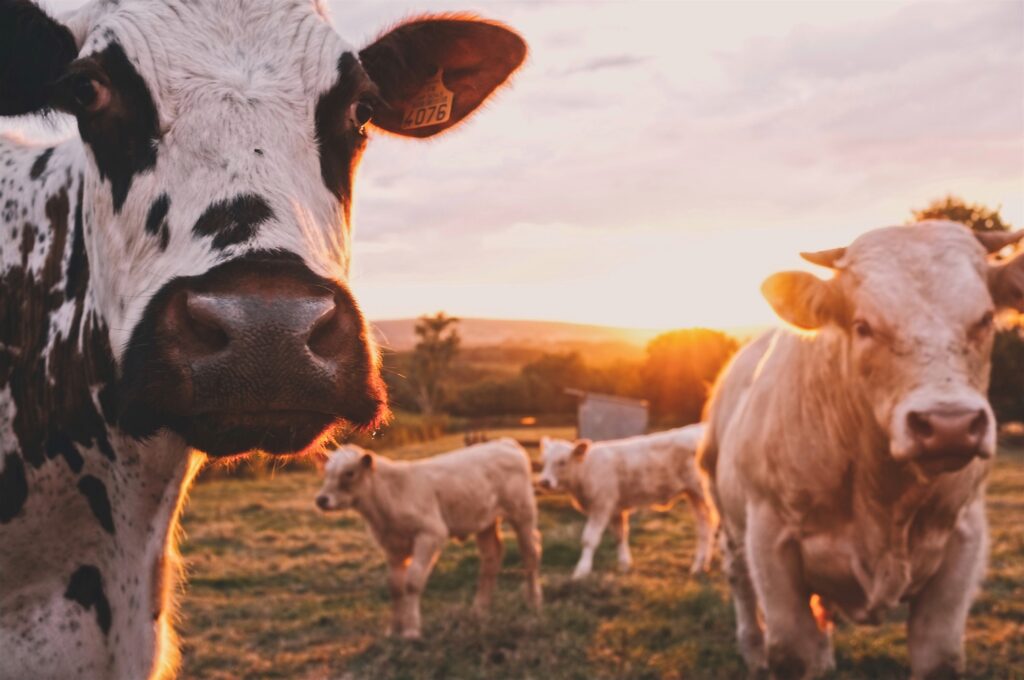Restoring the land to restore the sea

June 4, 2024 Benjamin Jones Chief Conservation Officer This year’s World Environment Day campaign focuses on land restoration, under the slogan “Our land. Our future. We are #GenerationRestoration.” Loss and degradation of coastal marine ecosystems, compromise the delivery of important ecosystem services to human society. Yet turning the tide on these losses and working towards a net gain in biodiversity is a challenge, not least because coastal marine ecosystems are exposed to threats occurring both in the ocean and on land. Land use change, through conversion of native terrestrial vegetation for agriculture, urbanization, and industry increases runoff and sedimentation, causing degradation of coastal ecosystems such as seagrass meadows. Swathes of evidence from across the globe reveal that anthropogenic activities from the land are some of the largest drivers of seagrass loss. For example, research from the Philippines has revealed that land use is more important than marine protection for tropical seagrass condition, and our own research has revealed the agricultural drivers of seagrass degradation across the British Isles. Yet for the most part, conservation prioritisation for coastal ecosystems is traditionally centred around protecting intact habitats from ocean-based stressors (e.g., fishing). If we are to conserve seagrass, we need to look beyond the ocean, and to the land. And this year’s World Environment Day is a key reminder of that. To conserve seagrass, should we be protecting habitat on land, protecting habitat in the ocean, restoring habitat on land, restoring habitat in the ocean, or a mixture of these actions? Answering this question is extremely difficult, not least when data is absent, histories of change are blurred, priorities for monitoring and management change and the nature and extent of threats to seagrass are unknown. In these instances, we believe that it is vital to understand which threats local stakeholders observe or perceive as being most persistent. Interweaving indigenous and local knowledge, and other expert witness knowledge as alternative data sources, is key. Our land. Our future. Seagrass meadows in the Wakatobi National Park (WNP), Indonesia are exploited for their rich fish and invertebrate communities – faunal communities that provide food security and livelihoods across the National Parks islands. Yet, with a growing population, the area of seagrass habitat is decreasing, and plant species composition and health is declining. Working with our local partner, FORKANI, and after a series of focus groups with local stakeholders, it seemed clear that the issue and threat they felt was most dominant, was sedimentation; the removal of mangroves and primarily forest areas had lessened the ability for land to absorb and store water. Built on indigenous and local knowledge, FORKANI, in collaboration with Project Seagrass, developed an incentives programme designed to provide fruit trees to farmers and landowners to facilitate stabilisation of river banks and reduce sediment deposition to the coast and at the same time improve the continually worsening problem of water storage. Now, over 5000 trees have been planted along riverbanks across the National Park by FORKANI, as well as school groups and government ministers. Photo: Nusi, a member of FORKANI, tends to trees in a nursery. Photo: Teenagers and school groups also took part in tree planting.
Visiting one of the worlds most remote seagrass meadows

Eva Rothausler On a narrow stretch along the northern-central coast of Chile, the seagrass Heterozostera nigricaulis (syn. Zostera nigricaulis, Heterozostera tasmanica) occurs in three isolated patches no more than 300 km apart. It is a common intertidal to subtidal seagrass in the Zosteracea family and is found growing in protected and soft-bottom areas. Heterozostera nigricaulis is native to the southern coast of Australia (Coyer et al. 2013), from where it colonized Chile some 100s to 1000s years ago (Smith et al. 2018). In Australia, they form extensive meadows that produce large quantities of non-buoyant seeds and specialized vegetative rhizomes used for dispersal (Thomson et al. 2015, Smith et al. 2016, 2018). In Chile, however, H. nigricaulis was never found to flower or produce seeds. Instead, they likely grow only vegetatively, as suggested by a recent study that found the three populations to consist of only two non-flowering clones that are not mixed (Smith et al. 2018). The seagrass meadow of H. nigricaulis at Puerto Aldea is situated in the southern part of the Tongoy Bay, at a small fishing caleta. It has a continuous distribution at 1 to 6 m depth (personal observation) and is protected from onshore winds and waves by the headland Punta Lengua de Vaca, which is an important upwelling zone. The spatial extent of the meadow is about 1.2 km2 (Phillips et al. 1983) where it also grows under the jetty of the fishing caleta. Due to its remoteness and rare occurrence, H. nigricaulis is classified as endangered by the Chilean Ministry of Environment (https://clasificacionespecies.mma.gob.cl/). To date 117 different species of macroinvertebrates and 16 fish species have been reported from the seagrass meadow at Puerto Aldea (González 1990), but most likely the diversity is even higher. The meadow at Puerto Aldea is habitat to the commercially exploited species such as Argopecten purpuratus (scallop) and Romaleon setosum (crab) (Pérez-Matus et al. 2005, SUBPESCA Chile). Consequently, artisanal fishers use the meadow to extract scallops and they have recognized that it serves as an ideal nursery ground for this species, i.e. without seagrass there are no natural scallop populations. For this reason, the fishers protect their seagrass meadow (personal communication). It is estimated that about 30 artisanal fishers are associated to the fishing caleta (SUBPESCA Chile) at Puerto Aldea. As H. nigricaulis seagrass meadows are rare in Chile but provide important ecosystem services, e.g., livelihoods for fishers and efficient carbon sinks (nature-based climate change solutions), their protection must become an important priority in Chile. References Coyer JA, Hoarau G, Kuo J, et al. 2013. Phylogeny and temporal divergence of the seagrass family Zosteraceae using one nuclear and three chloroplast loci. Systematics and Biodiversity 11:271–284. González SA 1990. Heterozostera tasmanica (Martens ex Aschers.) den Hartog y comunidad asociada en el norte de Chile. Pre-graduate thesis in Spanish. Universidad Católica del Norte, Chile. Pérez-Matus A, Cifuentes M, Araya P et al. 2005. Solitary seagrass meadow in Chile supports a unique scallop garden.JMBA Global Marine Environment 2:1-4. Phillips RC, Santelices B, Bravo R, McRoy CP 1983. Heterozostera tasmanica (Martensex Aschers.) den Hartog in Chile. Aquat Bot 15:195-200. Smith TM, York PH, Broitman BR, et al. 2018. Rare long-distance dispersal of a marine angiosperm across the Pacific Ocean. Global Ecol Biogeogr 27:487-496. Smith TM, York PH, Keough MJ, et al. 2016. Spatial variation in reproductive effort of a Southern Australian seagrass. Marine and Freshwater Research 120:214-224. Thomson ACG, York PH, Smith TM, et al. 2015. Seagrass viviparous propagules as a potential long-distance dispersal mechanism. Estuaries and Coasts 38:927–940. Seagrass Project Fondecyt 1231236
Ambition really is still critical for seagrass

Eight years ago sat on a roof top café at Swansea University we ambitiously set up a small marine conservation organisation called Project Seagrass. Swansea has always seemed a fitting place for Project Seagrass to start. After all it was deemed the ‘lovely ugly town’ by its most famous son, the poet Dylan Thomas. Thomas also went on to describe the place as the ‘graveyard of ambition’, a phrase that’s referred to in an artistic inscription outside the local train station by a more modern Swansea poet that states “Ambition is Critical”. The analogies to seagrass are striking, both entities with image problems and a lack of ambition. The seagrass worlds most famous son Carlos Duarte termed seagrass the Ugly duckling of marine conservation. The inception of Project Seagrass was ultimately built around wanting to turn seagrass into that Swan and not be content to remain the Ugly Duckling. Just like the City with a university of growing reputation, and a leading football club, Project Seagrass was created with ambition. But times are changing for both seagrass and Swansea. When Carlsberg and Sky TV are sponsoring seagrass restoration, seagrass is in the latest GCSE syllabus, and political parties include it in their manifestos, seagrass has hit the big time. Seagrass is now the beautiful Swan, but now more than ever ambition really is critical for seagrass. Getting seagrass on the agenda is one thing, transforming the trajectory of this habitat is another thing. People have long appreciated the value of Coral reefs and Pandas, this appreciation alone hasn’t stopped their decline. The real battles are only just beginning for seagrass. We face a climate emergency, we stare down the barrel of a nature crisis, and we walk blissfully unaware into the extreme challenges of providing food security for a growing global human population. Maintaining and improving the capacity of our oceans to help fight these challenges is an urgent need. We can no longer ignore the plight of our marine ecosystems; we need to conserve and restore habitats at scale urgently. Not in 10 years, but now. In 2016, our director Benjamin Jones published his MRes thesis showing the perilous state of the UKs seagrass, Alix Green has just followed that up with a long-term estimate of the sheer scale of seagrass loss that’s occurred throughout the UK. Seagrass in the UK is not in a pretty state, and globally the trajectory is just as bad, with the Global Wetlands project revealing in a recent paper the scale of the continued global loss of seagrass. The Ugly Ducking may well have become the Swan, but this doesn’t mean the Swan is healthy. The worlds seagrass meadows still have major problems, as does the city of Swansea. Although enormous progress is clearly being made in seagrass restoration, with places such as Sweden, the Netherlands and the US storming ahead with their successful projects, its no good planting in one location if we’re losing it faster in another. Seagrass conservation must be way more than just restoration. Building on The Global Goal for Nature, at Project Seagrass we’ve begun to discuss the concept of how we can reach a state of Zero Net Loss of Seagrass, and ultimately create a vision towards Net Positive for Seagrass and eventually Full Recovery for Seagrass. Even at the spatial scale of Wales as a nation, this is no easy conundrum to solve. Just like the poverty and social challenges of Swansea that remain deep rooted, we recognise that on our 8th birthday, problems for seagrass are also deep rooted, and ambition for seagrass is critical now more than ever.
Communities are central to conservation

[vc_row type=”in_container” full_screen_row_position=”middle” scene_position=”center” text_color=”dark” text_align=”left” overlay_strength=”0.3″ shape_divider_position=”bottom” bg_image_animation=”none”][vc_column column_padding=”no-extra-padding” column_padding_position=”all” background_color_opacity=”1″ background_hover_color_opacity=”1″ column_link_target=”_self” column_shadow=”none” column_border_radius=”none” width=”1/1″ tablet_width_inherit=”default” tablet_text_alignment=”default” phone_text_alignment=”default” column_border_width=”none” column_border_style=”solid” bg_image_animation=”none”][vc_column_text]Earlier this week saw the release of the Edinburgh Declaration on post-2020 global biodiversity framework, a bold call to action urging Parties to the Convention on Biological Diversity to work more closely with communities in order to meet 20 biodiversity goals set out in the Aichi accord, signed 10 years ago in in Nagoya, Japan. The vision set out in the post-2020 global biodiversity framework of “Living in harmony with nature”, and the 2030 mission as set out in the Zero Draft document make one thing pretty clear. Conserving biodiversity, for people and the planet, cannot happen without people. [/vc_column_text][/vc_column][/vc_row][vc_row type=”in_container” full_screen_row_position=”middle” scene_position=”center” text_color=”dark” text_align=”left” overlay_strength=”0.3″ shape_divider_position=”bottom” bg_image_animation=”none”][vc_column column_padding=”no-extra-padding” column_padding_position=”all” background_color_opacity=”1″ background_hover_color_opacity=”1″ column_link_target=”_self” column_shadow=”none” column_border_radius=”none” width=”1/1″ tablet_width_inherit=”default” tablet_text_alignment=”default” phone_text_alignment=”default” column_border_width=”none” column_border_style=”solid” bg_image_animation=”none”][image_with_animation image_url=”8962″ alignment=”center” animation=”Fade In” border_radius=”none” box_shadow=”none” max_width=”100%”][/vc_column][/vc_row][vc_row type=”in_container” full_screen_row_position=”middle” scene_position=”center” text_color=”dark” text_align=”left” overlay_strength=”0.3″ shape_divider_position=”bottom” bg_image_animation=”none”][vc_column column_padding=”no-extra-padding” column_padding_position=”all” background_color_opacity=”1″ background_hover_color_opacity=”1″ column_link_target=”_self” column_shadow=”none” column_border_radius=”none” width=”1/1″ tablet_width_inherit=”default” tablet_text_alignment=”default” phone_text_alignment=”default” column_border_width=”none” column_border_style=”solid” bg_image_animation=”none”][vc_column_text]For me, the past few years have been pretty key in re-shaping what conservation truly is. The principal top-down conservationist architype, imposed by scientists and NGOs for decades, has been replaced by measures that include the rights and needs of local communities. Placing humans within ecosystems, rather than apart from them, is key if we are to live in harmony with nature. Back in 2013, my initial visions for what Project Seagrass should exist to achieve were purely natural. Not for people, but for seagrass sake. Of course, there’s nothing wrong with being so passionate about an organism that you simply don’t want to see it lost. But what I missed and what I failed to see back then was how important seagrass meadows were to communities. The more time I’ve spent with communities that live by and utilise seagrass meadows, the more I’ve realised how we as humans have re-shaped nature. We’ve become a central part of the ecosystem. In some ways, our goals to return nature to a “pristine” state is naïve. We’re blind to the fact we don’t really know what pristine is. But, more worryingly, our view of a pristine environment, is one without humans. This why I now focus on evidencing this with my own research, showing just how central communities are to conservation and sustainability goals, and how ignoring them actually undermines conservation and sustainability goals themselves.[/vc_column_text][/vc_column][/vc_row][vc_row type=”in_container” full_screen_row_position=”middle” scene_position=”center” text_color=”dark” text_align=”left” overlay_strength=”0.3″ shape_divider_position=”bottom” bg_image_animation=”none”][vc_column column_padding=”no-extra-padding” column_padding_position=”all” background_color_opacity=”1″ background_hover_color_opacity=”1″ column_link_target=”_self” column_shadow=”none” column_border_radius=”none” width=”1/1″ tablet_width_inherit=”default” tablet_text_alignment=”default” phone_text_alignment=”default” column_border_width=”none” column_border_style=”solid” bg_image_animation=”none”][vc_column_text]It’s all well and good setting time-bound targets and making specific promises and commitments. These are useful as motivational goals to help drive action in tackling biodiversity loss, but what has been holding us up, what has been putting on the brakes, is our inability to recognise people as part of the solution. The Edinburgh Declaration on post-2020 global biodiversity framework recognises this, and why I fundamentally support its call to action. At Project Seagrass, this has been on our mind lately. Without the partnerships we’ve made with communities, our projects could not be possible. Seagrass Ocean Rescue for example is just as much communities doing conservation as it is conservation for communities. We’ll be build on this as we move forward with the post-2020 global biodiversity framework.[/vc_column_text][/vc_column][/vc_row][vc_row type=”in_container” full_screen_row_position=”middle” scene_position=”center” text_color=”dark” text_align=”left” overlay_strength=”0.3″ shape_divider_position=”bottom” bg_image_animation=”none”][vc_column column_padding=”no-extra-padding” column_padding_position=”all” background_color_opacity=”1″ background_hover_color_opacity=”1″ column_link_target=”_self” column_shadow=”none” column_border_radius=”none” width=”1/1″ tablet_width_inherit=”default” tablet_text_alignment=”default” phone_text_alignment=”default” column_border_width=”none” column_border_style=”solid” bg_image_animation=”none”][image_with_animation image_url=”7689″ alignment=”” animation=”Fade In” border_radius=”none” box_shadow=”none” max_width=”100%”][/vc_column][/vc_row]
It’s an ill bird that fouls its own nest

[vc_row type=”in_container” full_screen_row_position=”middle” scene_position=”center” text_color=”dark” text_align=”left” overlay_strength=”0.3″ shape_divider_position=”bottom” bg_image_animation=”none”][vc_column column_padding=”no-extra-padding” column_padding_position=”all” background_color_opacity=”1″ background_hover_color_opacity=”1″ column_link_target=”_self” column_shadow=”none” column_border_radius=”none” width=”1/1″ tablet_width_inherit=”default” tablet_text_alignment=”default” phone_text_alignment=”default” column_border_width=”none” column_border_style=”solid” bg_image_animation=”none”][vc_column_text] Nearly 30,000 tonnes of sewage containing human waste is to enter the UK despite potential problems for human health. Yet, what stinks for me is that sewage and livestock waste are driving seagrass loss across the UK – we already have a problem, and we don’t need to exacerbate this. Back in 2018, we released a study documenting this problem and called on the government to make changes – but water companies, some farmers and the Government have not, and it would appear are still not, doing enough to address theses risks. While the EU’s landmark legislation to improve bathing water quality has been a success in many places, much of what we do in the UK is woefully insufficient. Many seagrass meadows around the UK are in areas with designated EU protection. Protection on paper, but not in practice. Many seagrass meadows around the UK are polluted with nutrients derived from human sewage and livestock waste. Adding excessive amounts of nutrients to the environment, like spreading sewage liberally over fields, leads to those nutrients leeching out and into our rivers. Transported downstream to our coasts, these nutrients are a nightmare for seagrass leading to excessive growth of tiny algae called epiphytes which smother seagrass, leading to its death. Dead seagrass means no carbon sequestration, and in many cases dead seagrass means carbon emissions. Dead seagrass also means a loss of habitat for juvenile fish such as cod, herring and plaice, and dead seagrass means no coastal protection. Sewage puts all the benefits that seagrass provide to humans at risk. Farming is likely the UK’s leading cause of water pollution. Inefficiencies in the storage and disposal of sewage slurry mean that it ends up in rivers and coastal waters. Dr Andrew Singer, a senior scientist at the world-renowned Centre for Ecology and Hydrology, has said that there are no rivers in the UK that is safe to be swimming in. It’s clear then that there are some pretty systematic issues in the way we deal with sewage and livestock waste across the UK. Add on top of this the health issues that even the Environment Agency themselves acknowledge and you have a recipe for something that stinks. At the moment, we really don’t know whether spreading human sewage is safe or not for our food, according Alistair Boxall, a professor in environmental science at the University of York. It’s an ill bird that fouls its own nest.[/vc_column_text][/vc_column][/vc_row]

